Seniha Esen Yuksel
Hyperspectral Image Denoising via Self-Modulating Convolutional Neural Networks
Sep 15, 2023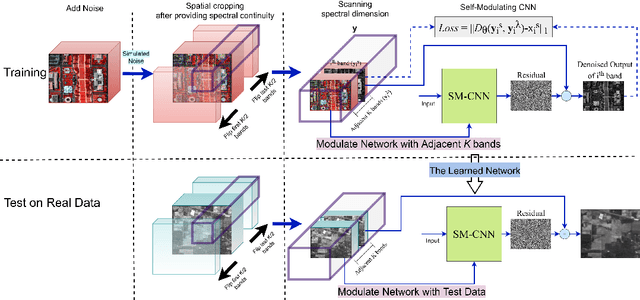
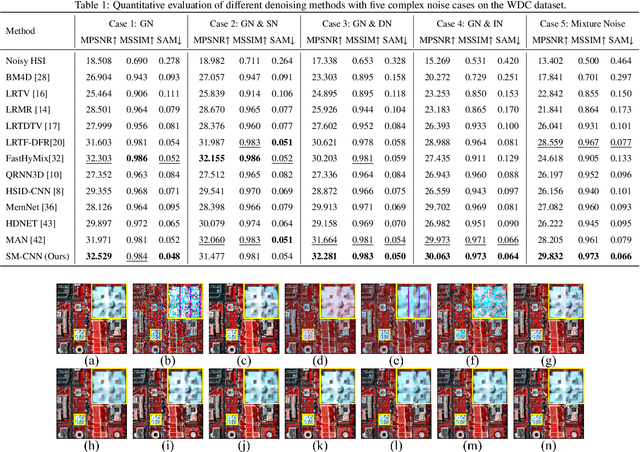
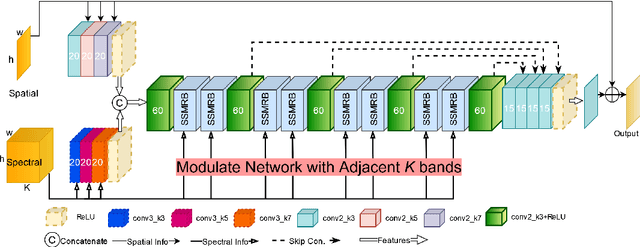
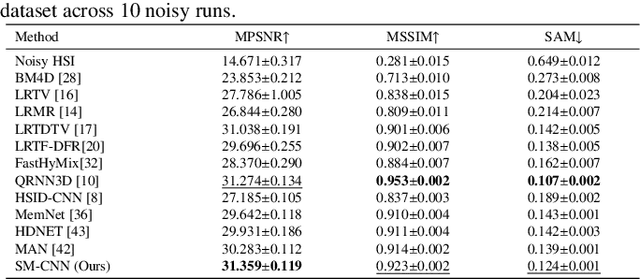
Abstract:Compared to natural images, hyperspectral images (HSIs) consist of a large number of bands, with each band capturing different spectral information from a certain wavelength, even some beyond the visible spectrum. These characteristics of HSIs make them highly effective for remote sensing applications. That said, the existing hyperspectral imaging devices introduce severe degradation in HSIs. Hence, hyperspectral image denoising has attracted lots of attention by the community lately. While recent deep HSI denoising methods have provided effective solutions, their performance under real-life complex noise remains suboptimal, as they lack adaptability to new data. To overcome these limitations, in our work, we introduce a self-modulating convolutional neural network which we refer to as SM-CNN, which utilizes correlated spectral and spatial information. At the core of the model lies a novel block, which we call spectral self-modulating residual block (SSMRB), that allows the network to transform the features in an adaptive manner based on the adjacent spectral data, enhancing the network's ability to handle complex noise. In particular, the introduction of SSMRB transforms our denoising network into a dynamic network that adapts its predicted features while denoising every input HSI with respect to its spatio-spectral characteristics. Experimental analysis on both synthetic and real data shows that the proposed SM-CNN outperforms other state-of-the-art HSI denoising methods both quantitatively and qualitatively on public benchmark datasets.
Fine-grained Classification of Solder Joints with α-skew Jensen-Shannon Divergence
Sep 20, 2022
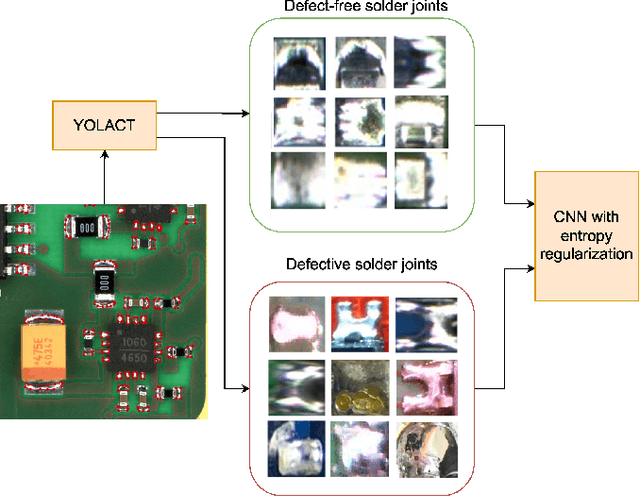
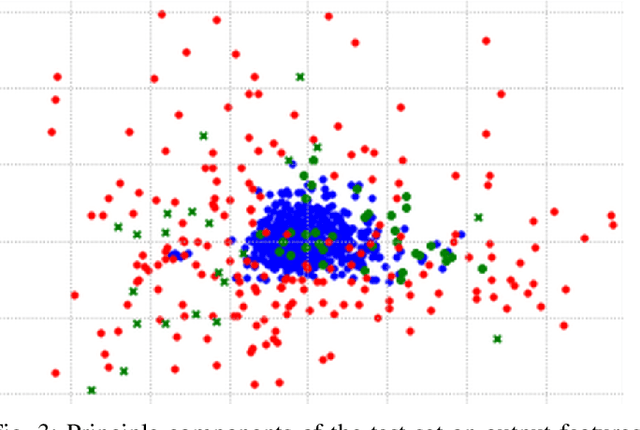
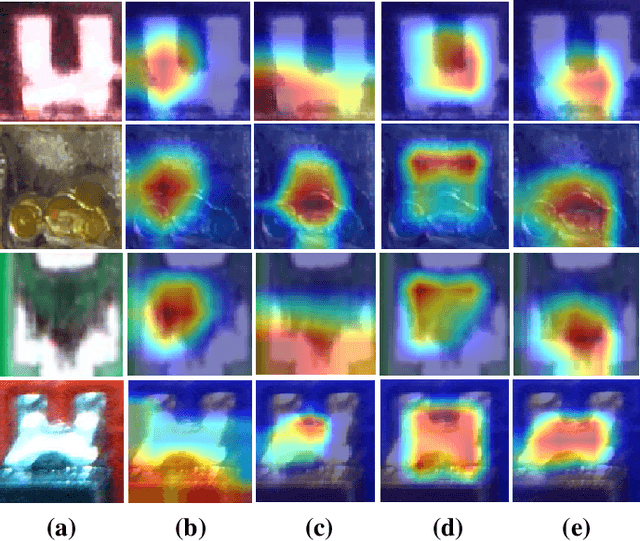
Abstract:Solder joint inspection (SJI) is a critical process in the production of printed circuit boards (PCB). Detection of solder errors during SJI is quite challenging as the solder joints have very small sizes and can take various shapes. In this study, we first show that solders have low feature diversity, and that the SJI can be carried out as a fine-grained image classification task which focuses on hard-to-distinguish object classes. To improve the fine-grained classification accuracy, penalizing confident model predictions by maximizing entropy was found useful in the literature. Inline with this information, we propose using the {\alpha}-skew Jensen-Shannon divergence ({\alpha}-JS) for penalizing the confidence in model predictions. We compare the {\alpha}-JS regularization with both existing entropyregularization based methods and the methods based on attention mechanism, segmentation techniques, transformer models, and specific loss functions for fine-grained image classification tasks. We show that the proposed approach achieves the highest F1-score and competitive accuracy for different models in the finegrained solder joint classification task. Finally, we visualize the activation maps and show that with entropy-regularization, more precise class-discriminative regions are localized, which are also more resilient to noise. Code will be made available here upon acceptance.
Anomaly Detection for Solder Joints Using $β$-VAE
Apr 24, 2021

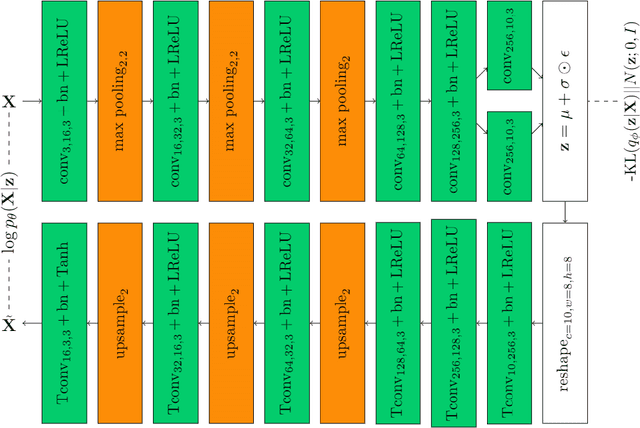

Abstract:In the assembly process of printed circuit boards (PCB), most of the errors are caused by solder joints in Surface Mount Devices (SMD). In the literature, traditional feature extraction based methods require designing hand-crafted features and rely on the tiered RGB illumination to detect solder joint errors, whereas the supervised Convolutional Neural Network (CNN) based approaches require a lot of labelled abnormal samples (defective solder joints) to achieve high accuracy. To solve the optical inspection problem in unrestricted environments with no special lighting and without the existence of error-free reference boards, we propose a new beta-Variational Autoencoders (beta-VAE) architecture for anomaly detection that can work on both IC and non-IC components. We show that the proposed model learns disentangled representation of data, leading to more independent features and improved latent space representations. We compare the activation and gradient-based representations that are used to characterize anomalies; and observe the effect of different beta parameters on accuracy and on untwining the feature representations in beta-VAE. Finally, we show that anomalies on solder joints can be detected with high accuracy via a model trained on directly normal samples without designated hardware or feature engineering.
 Add to Chrome
Add to Chrome Add to Firefox
Add to Firefox Add to Edge
Add to Edge